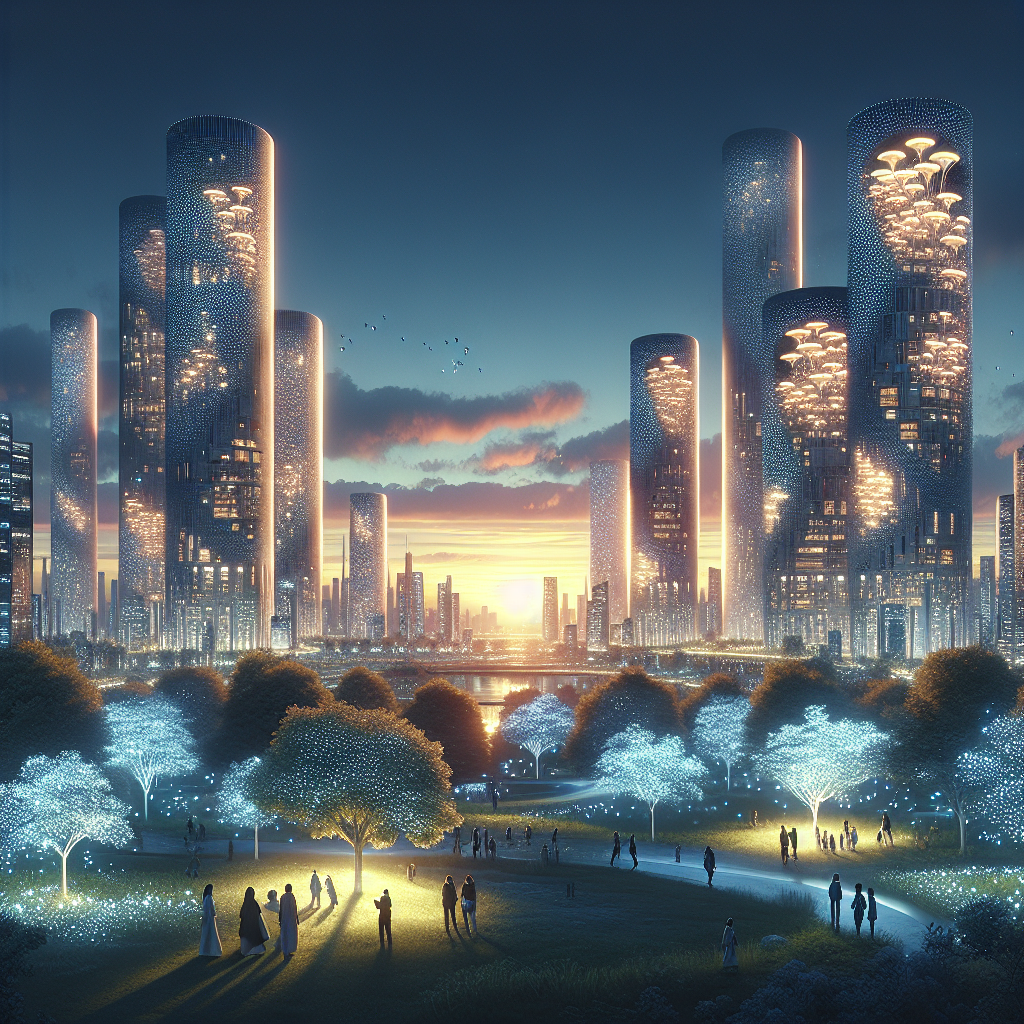The Impact of Bioluminescent Lighting on Architectural Design

The Luminous Revolution: Bioluminescent Lighting’s Role in Shaping Future Architectural Design
Imagine a world where the built environment emits a soft, ethereal glow, not from electric bulbs or neon signs, but from the very structures themselves. This is the promise of bioluminescent lighting, a burgeoning field that merges the enigmatic beauty of natural light-producing organisms with cutting-edge architectural design. The integration of bioluminescent materials into the fabric of our buildings is not just a stylistic choice; it represents a seismic shift in how we conceive and interact with light within our spaces.
At the forefront of this luminous revolution, architects and designers are exploring the potential of bioluminescent lighting to create spaces that are not only visually stunning but also environmentally sustainable. The allure of bioluminescent lighting lies in its ability to harness living organisms, such as bacteria, algae, and fungi, to produce light through biochemical reactions. This innovative approach to lighting is redefining the boundaries of architectural design, offering a glimpse into a future where our buildings can illuminate themselves.
Bioluminescence: The Natural Phenomenon Transforming Architectural Illumination
Bioluminescence is a natural phenomenon that has captivated humans for millennia. It is the ability of certain organisms to convert chemical energy into light energy, resulting in a mesmerizing glow. This phenomenon is not just limited to the depths of the ocean; it is found across a variety of ecosystems, from the forest floor to the night sky. By harnessing the power of bioluminescence, architects are tapping into an ancient source of light that is both energy-efficient and visually captivating.
The application of bioluminescent lighting in architecture is a testament to the field’s ongoing commitment to sustainability. By utilizing living organisms as a light source, buildings can reduce their reliance on traditional energy sources, thereby lowering their carbon footprint. This approach aligns with the principles of biophilic design, which seeks to connect building occupants more closely with nature.
Bioluminescent Lighting: A Sustainable and Aesthetic Breakthrough
The integration of bioluminescent lighting into architectural design is not merely a functional upgrade; it is an aesthetic revolution. The soft, otherworldly glow of bioluminescent materials offers a stark contrast to the harsh, artificial light that dominates our urban landscapes. This new lighting paradigm has the potential to transform public spaces, from parks to plazas, creating environments that are both inviting and harmonious with the natural world.
Moreover, the application of bioluminescent lighting extends beyond the visual. It has the potential to enhance the psychological well-being of occupants by providing a more natural and restful light source. Studies have shown that exposure to natural light sources can improve mood and increase productivity, making bioluminescent lighting a compelling choice for workspaces and residential areas alike.
Case Studies: Pioneering Projects in Bioluminescent Architectural Design
Several groundbreaking projects have already begun to explore the possibilities of bioluminescent lighting. For instance, the Living Light installation in Seoul, South Korea, is an example of how bioluminescent technology can be integrated into public art, creating a dynamic and interactive experience for visitors.
Another notable project is the in Puerto Rico, where architects have designed structures that complement the natural glow of the water, enhancing the bay’s ethereal beauty without disrupting the delicate ecosystem.
These projects exemplify the potential of bioluminescent lighting to create spaces that are not only functional but also deeply connected to the environment. They serve as beacons of innovation, guiding the way for future developments in the field of architectural design.
Technological Advancements and the Future of Bioluminescent Lighting
The advancement of bioluminescent lighting technology is crucial to its widespread adoption in architecture. Researchers are continually exploring new methods to increase the brightness, longevity, and practicality of bioluminescent materials. The development of genetically modified organisms that can produce light more efficiently is one such avenue of research, promising to make bioluminescent lighting a more viable option for large-scale applications.
As technology progresses, we can anticipate a future where bioluminescent lighting is not just a novelty but a standard feature in architectural design. This evolution will likely bring about a new era of energy conservation and design aesthetics, where the illumination of our buildings is as natural as the light from the stars.
Challenges and Considerations in Implementing Bioluminescent Lighting
Despite its many benefits, the implementation of bioluminescent lighting in architecture is not without its challenges. The cultivation and maintenance of living organisms for lighting require careful consideration of environmental conditions, such as temperature, humidity, and nutrient supply. Architects and designers must also navigate the ethical implications of using living organisms in their projects, ensuring that their practices are sustainable and humane.








